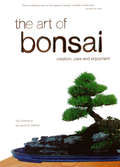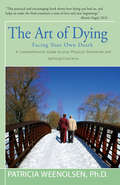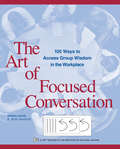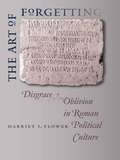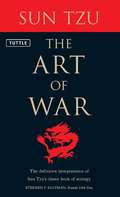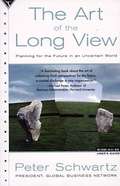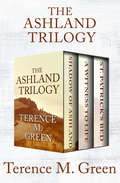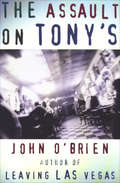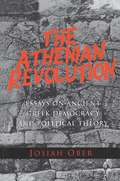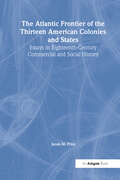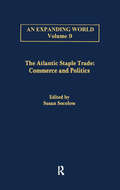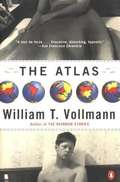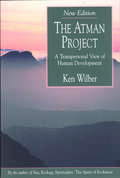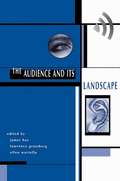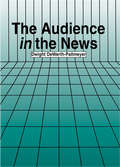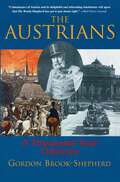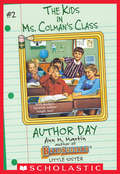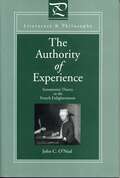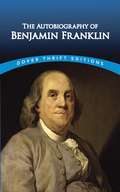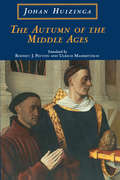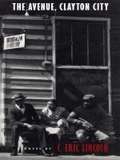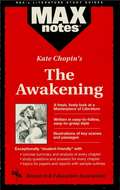- Table View
- List View
The Art of Bonsai
by Giovanna M. Halford Yuji YoshimuraLearn the ins and outs of proper bonsai design and care with this comprehensive Japanese gardening book.Japanese bonsai have long been admired throughout the world while their care and preservation have seemed shrouded in mystery. The Art of Bonsai is, however, a comparatively simple art to learn. Anyone with a love a plants, a little patience and this eminently practical book can create bonsai and keep a finished plant healthy and vigorous for generations.Included in this definitive volume are:Detailed, illustrated instructions on propagation and trainingHints for those growing bonsai in a hurry and apartment dwellersDaily and seasonal bonsai care practicesDealing with pests and bonsai troubleshootingHow to judge, select and exhibit bonsaiDetailed appendices on tools, equipment, soil analysesData on more than 300 species of plants used in making bonsaiThis classic work remains an eminently practical book and is the classic guide to bonsai care. It contains the essentials of an art that is one of Japan's most treasured traditions--sculpting beauty in living wood.
The Art of Dying
by Patricia Weenolsen"The Art of Dying speaks to modern readers with refreshing frankness and wit. It covers the subject thoroughly, from how to inform relatives of impending death, to coping with pain and fear, to death rituals, to preparing for a possible afterlife or, depending on one's viewpoint, the end of it all." --Publishers Weekly "Along with our caring presence, this book may be the finest gift we can give someone facing the last stage of life." --Rabbi Harold Kushner, author of When Bad Things Happen to Good People "Dr. Weenolsen . . . doesn't duck the tough questions." --M. Brewster Smith, PhD, former president, American Psychological Association "This book gives the same things a good support group does--compassionate sympathy and practical advice for people sharing pain. It will be a godsend." --Rebecca Brown, author of Gifts of the Body "Begins with 'the day you receive the diagnosis' and the sudden realization that 'never again will you be as you were. Even if by some miracle you heal, it will be only temporary.' Weenolsen takes the panic and paralysis out of such news through wise, aggressive, no-holds-barred approaches." --Patricia Holt, San Francisco Chronicle "A book everyone can benefit from reading." --Nancy Pearl, author of More Book Lust "Also for family and friends of dying persons, for professionals in the health-care fields, and for those who train them." --Hannelore Wass, PhD, founding editor, Death Studies
The Art of Focused Conversation
by R. Brian StanfieldThis book has served me so well in my new job. I can't tell you how many times I have pulled the book off the shelf to get some direction in creating my own questions. It has been a great asset in helping me have meaningful and directed conversations at a critical time in my new job. And it has saved me precious time. - Great book!?Marlene Lockwood, Group Leader, St. Helen's Hospital, Deer Park, CaliforniaCommunication within many organizations has been reduced to email, electronic file transfer, and hasty sound bytes at hurried meetings. More and more, people appear to have forgotten the value of wisdom gained by ordinary conversations.But, at different times in history, conversation has been regarded as an art form - a crucial component of human relations. Conversation has the power to solve a problem, heal a wound, generate commitment, bond a team, generate new options, or build a vision. Conversations can shift working patterns, build friendships, create focus and energy, cement resolve.The Art of Focused Conversation convincingly restores this most human of attributes to prime place within businesses and organizations, and demonstrates what can be accomplished through the medium of focused conversation. The first Part describes the theory and background of the conversation method, which has been effectively used for group consensus making in: 1) problem solving; 2) troubleshooting; 3) coaching; 4) research and 5) interpretation of data. It also discusses how to prepare a conversation, how to lead a conversation, and what the common mistakes are. Part two then provides 100 sample conversations designed for use in many different situations, including: 1) reviewing and evaluating; 2) preparation and planning; 3) coaching, and mentoring; 4) data and media interpretation; 5) decision making; 6) managing and supervising; and 7) personal reflection and group celebrations.Developed, tested, and extensively used by professionals in the field of organizational development, The Art of Focused Conversation is an invaluable resource for all those working to improve communications in firms and organizations."This book is absolutely fabulous. I started it last night, used a whole bunch of stuff
The Art of Forgetting
by Harriet I. FlowerElite Romans periodically chose to limit or destroy the memory of a leading citizen who was deemed an unworthy member of the community. Sanctions against memory could lead to the removal or mutilation of portraits and public inscriptions. Harriet Flower provides the first chronological overview of the development of this Roman practice--an instruction to forget--from archaic times into the second century A.D. Flower explores Roman memory sanctions against the background of Greek and Hellenistic cultural influence and in the context of the wider Mediterranean world. Combining literary texts, inscriptions, coins, and material evidence, this richly illustrated study contributes to a deeper understanding of Roman political culture.
The Art of War
by Stephen F. KaufmanSun Tzu's Art of War is perhaps the best known and highly regarded treatise on strategy ever written. Although its wisdom is over two thousand years old, its principles are timeless for today's boardroom battlefields. Thirteen sections present incisive strategems from assessing the foe to proper treatment of troops to espionage. Hanshi Steve Kaufman, the widely acknowledged "Founding Father" of American Karate, translates this classic with respect for its powerful martial applications. Kaufman packs the power of the original text into straightforward prose for the benefits of all martial artists and corporate warriors.
The Art of the Long View: Planning for the Future in an Uncertain World
by Peter SchwartzWhat increasingly affects all of us, whether professional planners or individuals preparing for a better future, is not the tangibles of life - bottom-line numbers, for instance - but the intangibles: our hopes and fears, our beliefs and dreams. Only stories - scenarios - and our ability to visualize different kinds of futures adequately capture these intangibles. In The Art of the Long View, now for the first time in paperback and with the addition of an all-new User's Guide, Peter Schwartz outlines the "scenaric" approach, giving you the tools for developing a strategic vision within your business. Schwartz describes the new techniques, originally developed within Royal/Dutch Shell, based on many of his firsthand scenario exercises with the world's leading institutions and companies, including the White House, EPA, BellSouth, PG & E, and the International Stock Exchange.
The Artificial River: The Erie Canal and the Paradox of Progress, 1817–1862
by Carol SheriffRediscover the Gems of Antiquity in The Artificial RiverWoven from a rich tapestry of research, The Artificial River is more than just a historical account of the Erie Canal—it encapsulates a pivotal era in United States history, especially the monumental strides in engineering, commerce, and socio-cultural shifts between the War of 1812 and the Civil War.Join Carol Sheriff as she vividly paints the human endeavor behind the making of the Erie Canal—an artificial river that irrevocably changed landscapes and lives.This skillfully crafted narrative opens the door to the past, inviting you on a fascinating journey through time. The Artificial River immerses you in the lives of ordinary yet extraordinary individuals—farmers, businessmen, tourists, and government officials—who stood at the forefront of this significant transformation.The Erie Canal wasn’t just a waterway–it was a lifeline that laid the foundation for the capitalist democracy we know today. The Artificial River is a cleverly bound chronicle of American commerce and the spirit of public good—one that’s sure to captivate history enthusiasts and casual readers alike.
The Ashland Trilogy: Shadow of Ashland, A Witness to Life, and St. Patrick's Bed (The Ashland Trilogy #1)
by Terence M. GreenThis family saga that travels through time—from modern Toronto to Depression-era Kentucky—and explores how the ghosts of the past shape our history. Every family has its stories: joys and losses, hopes and regrets. For the family that populates these three novels, the secrets forgotten with the passing of years become suddenly accessible, as journeys through time unite loved ones across the decades. Shadow of Ashland: Leo Nolan&’s mother shows him a rose just before she dies—and claims it was given to her by her brother, who disappeared fifty years earlier. Leo is sure it&’s the delirium talking, the rambling of a sick and elderly woman. But after her death, letters from the same long-lost brother begin to arrive at the family home, postmarked 1934—plunging Leo into a journey that will take him all the way from Canada to Ashland, Kentucky, where he will walk through a window that leads to another time and world. A Witness to Life: This prequel focusing on Leo&’s maternal grandfather, Martin Radey, and the chronology of his life &“is an emotionally charged experience that will not be soon forgotten&” (Dallas Morning News). St. Patrick&’s Bed: In the final chapter to the Ashland Trilogy, a son of the next generation asks questions about his biological father and sets off along with Leo on a quest for his heritage and history. A highly acclaimed epic from &“a special writer,&” The Ashland Trilogy blends the fantastical and the real in a tale that will resonate with anyone who has yearned to know more about the generations who came before (The Globe and Mail).
The Assault on Tony's
by John O'BrienThe Assault on Tony's is an unapologetic, unsentimental, and at times exuberant examination of the joys and sorrows of intoxication, combining the inimitable unflinching eye and grim wit of John O'Brien, author of Leaving Las Vegas. Barricaded in a bar called Tony's while a riot rages outside, the characters that people The Assault on Tony's are united by their desire to drink to the end, no matter what the consequences. In this stark and darkly humorous novel, social alliances are forged and challenged as each member of this macabre party ignores his fears in favor of keeping his tumbler full to the brim. As time goes on and the liquor supply starts to dwindle, the novel reaches a gritty intensity as it exposes the highs and lows of the human spirit.
The Athenian Revolution: Essays on Ancient Greek Democracy and Political Theory
by Josiah OberWhere did "democracy" come from, and what was its original form and meaning? Here Josiah Ober shows that this "power of the people" crystallized in a revolutionary uprising by the ordinary citizens of Athens in 508-507 B.C. He then examines the consequences of the development of direct democracy for upper-and lower-class citizens, for dissident Athenian intellectuals, and for those who were denied citizenship under the new regime (women, slaves, resident foreigners), as well as for the general development of Greek history. When the citizens suddenly took power into their own hands, they changed the cultural and social landscape of Greece, thereby helping to inaugurate the Classical Era. Democracy led to fundamental adjustments in the basic structures of Athenian society, altered the forms and direction of political thinking, and sparked a series of dramatic reorientations in international relations. It quickly made Athens into the most powerful Greek city-state, but it also fatally undermined the traditional Greek rules of warfare. It stimulated the development of the Western tradition of political theorizing and encouraged a new conception of justice that has striking parallels to contemporary theories of rights. But Athenians never embraced the notions of inherency and inalienability that have placed the concept of rights at the center of modern political thought. Thus the play of power that constituted life in democratic Athens is revealed as at once strangely familiar and desperately foreign, and the values sustaining the Athenian political community as simultaneously admirable and terrifying.
The Atlantic Frontier of the Thirteen American Colonies and States: Essays in Eighteenth-Century Commercial and Social History (Variorum Collected Studies)
by Jacob M. PriceThe external economy of British North America has attracted considerable scholarly attention in the last two generations, and the papers reprinted here, in this second collection from Jacob Price, make important contributions to quantification, conceptualisation and debate. Studies presenting and analysing new statistical material from the English and Scottish customs accounts are supplemented by a general survey of the transatlantic economy in the 18th century which is required reading for all students of the subject. Price's treatment is diversified into financial arrangements and the role of credit in the slave trade and plantation economies. In a provocative chapter "Who cared about the colonies?", concern in Britain for the 13 colonies between 1714 and 1775 is explored in terms of the ability of the colonies to involve the interests and command the attention and concern of people in Britain from the politically eminent to those in trade and to the nation at large.
The Atlantic Staple Trade: Volume 1: Commerce and Politics; Volume 2: The Economics of Trade
by Susan SocolowThis two volume set reprints the most important standard studies and interpretations of the development of the crucial Atlantic trade. The first volume, concerned with general trade and political economy, approaches the topic from the viewpoint of individual trading nations in the Atlantic - England, France, Ireland, Spain - whilst not neglecting the importance of regions like West Africa. Rivalry between the different national traders is also considered, as well as the vexed question of the relation of trade to the old colonial empires. The impact of administration, war and regulation as reflected by the contraband issue highlights the strong political element in the developing Atlantic commercial world. Case studies are provided of major staple and luxury commodity trades: rice, molasses, tobacco, cochineal, logwood, hides, cacao and the sometimes neglected whaling industry. These set the scene for quantitative and technical studies of the contribution of shipping to trade. Specific markets considered in more detail include a comparison of Philadelphia and Havana, the changing scale of business activity in the Chesapeake trade, and the impact of trade on port development in America. The volume closes with seminal studies by McCusker and Price on the central role of trade and the Atlantic economy. Taken together these two volumes provide the best possible foundation for the detailed study of the Atlantic trade in global expansion.
The Atlas
by William T. VollmannHailed by Newsday as "the most unconventional--and possibly the most exciting and imaginative--novelist at work today," William T. Vollmann has also established himself as an intrepid journalist willing to go to the hottest spots on the planet. Here he draws on these formidable talents to create a web of fifty-three interconnected tales, what he calls ?a piecemeal atlas of the world I think in.? Set in locales from Phnom Penh to Sarajevo, Mogadishu to New York, and provocatively combining autobiography with invention, fantasy with reportage, these stories examine poverty, violence, and loss even as they celebrate the beauty of landscape, the thrill of the alien, the infinitely precious pain of love. The Atlas brings to life a fascinating array of human beings: an old Inuit walrus-hunter, urban aborigines in Sydney, a crack-addicted prostitute, and even Vollmann himself.
The Atlas
by William T VollmannHailed by Newsday as "the most unconventional--and possibly the most exciting and imaginative--novelist at work today," William T. Vollmann has also established himself as an intrepid journalist willing to go to the hottest spots on the planet. Here he draws on these formidable talents to create a web of fifty-three interconnected tales, what he calls ?a piecemeal atlas of the world I think in.?Set in locales from Phnom Penh to Sarajevo, Mogadishu to New York, and provocatively combining autobiography with invention, fantasy with reportage, these stories examine poverty, violence, and loss even as they celebrate the beauty of landscape, the thrill of the alien, the infinitely precious pain of love. The Atlas brings to life a fascinating array of human beings: an old Inuit walrus-hunter, urban aborigines in Sydney, a crack-addicted prostitute, and even Vollmann himself.
The Atman Project
by Ken WilberThe Atman Project is widely hailed as the first psychology that succeeds in uniting East and West, conventional and contemplative, orthodox and mystical, into a single, coherent framework. This essential introduction to Ken Wilber's ideas on the evolution of human consciousness features a new foreword linking this work to Wilber's current thinking.
The Atman Project
by Ken WilberWilber traces human development from infancy into adulthood and beyond, into those states described by mystics and spiritual adepts. The spiritual evolution of such extraordinary individuals as the Buddha and Jesus hints at the direction human beings will take in their continuing growth toward transcendence.
The Audience and Its Landscape (Cultural Studies)
by James HayThis book offers a major reconceptualization of the term “audience,” including the landscape of a given audience—the situated and territorializing features of any way of seeing and defining the world. Given de Certeau's hypothesis that listening, watching, and reading all occur in places and result in produce transformed paths or spaces, the contributors to this landmark volume have provided innovative essays analyzing the transformations that take place in the geography between sender and receiver. The book acknowledges, in the face of conventional “discourse analysis,” the contextual features of discourse, to produce a complex and textured understanding of the concept of audience.The Audience and Its Landscape, presents the work of a vital cross-section of international scholars including Sweden's Karl Erik Rosengren, the UK's Jay G. Blumler and Roger Silverstone, Australia's Tony Bennett, Israel's Elihu Katz, Canada's Martin Allor, and the United States's Janice Radway, Byron Reeves, and John Fisk, to name a few. This book is truly groundbreaking in its depth and scope, and will speak to students of rhetoric, mass communication, cultural studies, anthropology, and sociology alike.
The Audience in the News (Routledge Communication Series)
by Dwight DeWerth-PallmeyerIn recent years, communication scholars have taken a renewed interest in analyzing the audience and its impact on the communication process. Similarly, news editors and producers have often turned toward a marketing orientation which seeks to give new readers and viewers what they want, or at least what they say they want. Yet, there has still been little written about just how the audience factors into the news which is produced. Seeking to fill that niche, this book argues that audience images are quite important in the construction of news, but not easily detected. That is because journalists are not principally interested in their audience; they are interested in the news. USE THIS PARAGRAPH ONLY FOR GENERAL CATALOGS... This volume argues that although journalistic images of the audience may be "incomplete," they do exist and powerfully help shape the work of journalists in producing journalistic texts. Using a case study of news workers and news texts at two Chicago newsgathering organizations, the Chicago Tribune and WGN-TV, this book: * examines notions of audience and how they have been treated by academicians, * presents a detailed description of the ways in which audience is embedded within the news construction process, * presents a very representative set of journalistic news values, * presents differing ideas of audience at three key levels of the news organizations -- reporters and news gatherers, editors and producers, and senior editors, producers, and news directors, and * seeks to summarize and position this study within the larger body of mass communication research.
The Austrians: A Thousand-Year Odyssey
by Gordon Brook-ShepherdThis is a masterful survey of Austria's controversial place at the heart of European history. From the Reformation through the Napoleonic and Cold Wars to European Union, a superb history of Austria's central role in uniting Western civilization is covered. 24 pages of photographs and maps are included. "Connoisseurs of Austria and its delightful and infuriating inhabitants will agree that Mr. Brook-Shepherd has got it just about right. '--The Wall Street Journal "Engrossing, elegantly written history. '--Publishers Weekly
The Author Day (The Kids in Ms. Colman's Class #2)
by Ann M. MartinFrom the bestselling author of the generation-defining series The Baby-sitters Club comes a series for a new generation!School is always fun in Ms. Colman's class!A famous author is going to visit Ms. Colman's class. He is Ricky's favorite author. Ricky can't wait for Author Day. But then Ricky makes a big mistake in class. Now Ricky doesn't want to have Author Day at all.
The Authority of Experience: Sensationist Theory in the French Enlightenment (Literature and Philosophy)
by John C. O'NealSensationism, a philosophy that gained momentum in the French Enlightenment as a response to Lockean empiricism, was acclaimed by Hippolyte Taine as "the doctrine of the most lucid, methodical, and French minds to have honored France." The first major general study in English of eighteenth-century French sensationism, The Authority of Experience presents the history of a complex set of ideas and explores their important ramifications for literature, education, and moral theory.The study begins by presenting the main ideas of sensationist philosophers Condillac, Bonnet, and Helvétius, who held that all of our ideas come to us through the senses. The experience of the body in seeing, hearing, smelling, tasting, and touching enabled individuals, as John C. O'Neal points out, to challenge the sometimes arbitrary authority of institutions and people in positions of power. After a general introduction to sensationism, the author develops a theory of sensationist aesthetics that not only reveals the interconnections of the period's philosophy and literature but also enhances our awareness of the forces at work in the French novel. He goes on to examine the relations between sensationism and eighteenth-century French educational theory, materialism, and idéologie. Ultimately, O'Neal opens a discussion of the implications of sensationist thought for issues of particular concern to society today.
The Autobiography of Benjamin Franklin: The Classic American Autobiography By Ben Franklin (Dover Thrift Editions)
by Benjamin FranklinBlessed with enormous talents and the energy and ambition to go with them, Franklin was a statesman, author, inventor, printer, and scientist. He helped draft the Declaration of Independence and later was involved in negotiating the peace treaty with Britain that ended the Revolutionary War. He also invented bifocals, a stove that is still manufactured, a water-harmonica, and the lightning rod. Franklin's extraordinary range of interests and accomplishments are brilliantly recorded in his Autobiography, considered one of the classics of the genre. Covering his life up to his prewar stay in London as representative of the Pennsylvania Assembly, this charming self-portrait recalls Franklin's boyhood, his determination to achieve high moral standards, his work as a printer, experiments with electricity, political career, experiences during the French and Indian War, and more. Related in an honest, open, unaffected style, this highly readable account offers a wonderfully intimate glimpse of the Founding Father sometimes called "the wisest American."
The Autumn of the Middle Ages
by Johan Huizinga"Here is the first full translation into English of one of the 20th century's few undoubted classics of history." —Washington Post Book WorldThe Autumn of the Middle Ages is Johan Huizinga's classic portrait of life, thought, and art in fourteenth- and fifteenth-century France and the Netherlands. Few who have read this book in English realize that The Waning of the Middle Ages, the only previous translation, is vastly different from the original Dutch, and incompatible will all other European-language translations. For Huizinga, the fourteenth- and fifteenth-century marked not the birth of a dramatically new era in history—the Renaissance—but the fullest, ripest phase of medieval life and thought. However, his work was criticized both at home and in Europe for being "old-fashioned" and "too literary" when The Waning of the Middle Ages was first published in 1919. In the 1924 translation, Fritz Hopman adapted, reduced and altered the Dutch edition—softening Huizinga's passionate arguments, dulling his nuances, and eliminating theoretical passages. He dropped many passages Huizinga had quoted in their original old French. Additionally, chapters were rearranged, all references were dropped, and mistranslations were introduced. This translation corrects such errors, recreating the second Dutch edition which represents Huizinga's thinking at its most important stage. Everything that was dropped or rearranged has been restored. Prose quotations appear in French, with translations preprinted at the bottom of the page, mistranslations have been corrected. "The advantages of the new translation are so many. . . . It is one of the greatest, as well as one of the most enthralling, historical classics of the twentieth century, and everyone will surely want to read it in the form that was obviously intended by the author." —Francis Haskell, New York Review of Books "A once pathbreaking piece of historical interpretation. . . . This new translation will no doubt bring Huizinga and his pioneering work back into the discussion of historical interpretation." —Rosamond McKitterick, New York Times Book Review
The Avenue, Clayton City
by C. Eric LincolnThe Avenue in C. Eric Lincoln's fictional town is the principal residential street of the black community in Clayton City, a prototypical southern town languishing between the two world wars. Unpaved and marked by ditches full of frogs, snakes, and empty whiskey bottles on one side of town, it is the same street, though with a different name, that originates downtown. Only when it reaches the black section of Clayton City do the paving stop and the trash-filled ditches begin. On one side, it provides a significant address for the white people who live there. On the other, despite its rundown air, it is still the best address available to the town's black population. Some of them, in fact, are willing to go to any extreme, including murder, to get there.In this novel, originally published in 1988, Lincoln creates with deft skill the drama that rises from the lives of the people of Clayton City. In turn amusing, disgusting, enraging, wistful, and, as one hears the secrets hidden deep in their hearts, shocking, they exist in a place whose vibrant personality is itself a unique configuration of geography, relationships, patterns of behavior, and events. It is also a place whose unspoken and hidden power lies in its crushing compulsion to maintain itself as it already is--a power that forces everyone to succumb to an inflexible social order.
The Awakening (MAXNotes Literature Guides)
by Debra LiebermanREA's MAXnotes for Kate Chopin's The Awakening MAXnotes offer a fresh look at masterpieces of literature, presented in a lively and interesting fashion. Written by literary experts who currently teach the subject, MAXnotes will enhance your understanding and enjoyment of the work. MAXnotes are designed to stimulate independent thought about the literary work by raising various issues and thought-provoking ideas and questions. MAXnotes cover the essentials of what one should know about each work, including an overall summary, character lists, an explanation and discussion of the plot, the work's historical context, illustrations to convey the mood of the work, and a biography of the author. Each chapter is individually summarized and analyzed, and has study questions and answers.
